Specialized Just Dropped Some Big Updates to Stalwarts of Its Cross-Country Tire Range
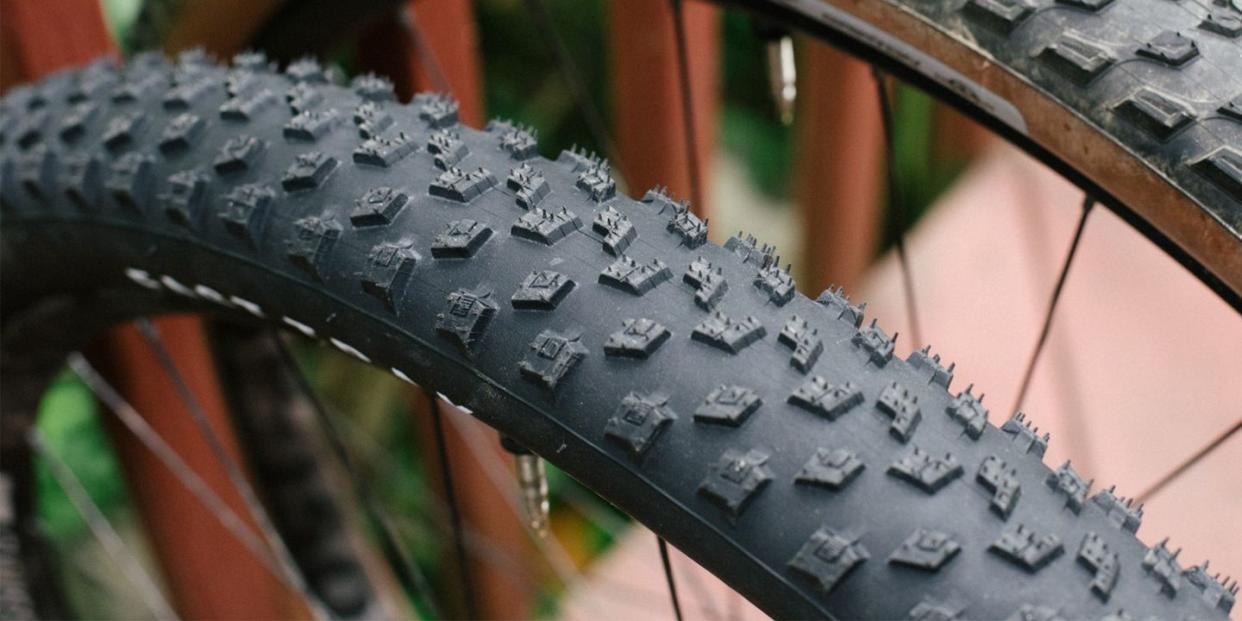
“Hearst Magazines and Verizon Media may earn commission or revenue on some items through the links below.”
Specialized dropped some big updates to stalwarts of its cross-country tire range: Renegade, Fast Trak, and Ground Control. Clearly pulling influence from the push toward more trail-capable XC bikes and parts, as well as learnings and feedback from World Cup mountain bike athletes, the new range is more of a full reset than simply refreshing some logos or adding a new sidewall color option.
What’s New?
The Specialized tire-development team started (pretty much) from the ground floor with these new models, with the only thing rolling over into the new versions being the names and sidewall construction. We are talking about a complete redo here of tread patterns and rubber compounds for the cross-country category.
Each of these factors plays a role in explaining what makes these new designs something to keep your eyes on and consider for your next purchase or upgrade—which we’ve broken down here for you so you can wrap your head around it because, honestly, there is a whole lot going on.
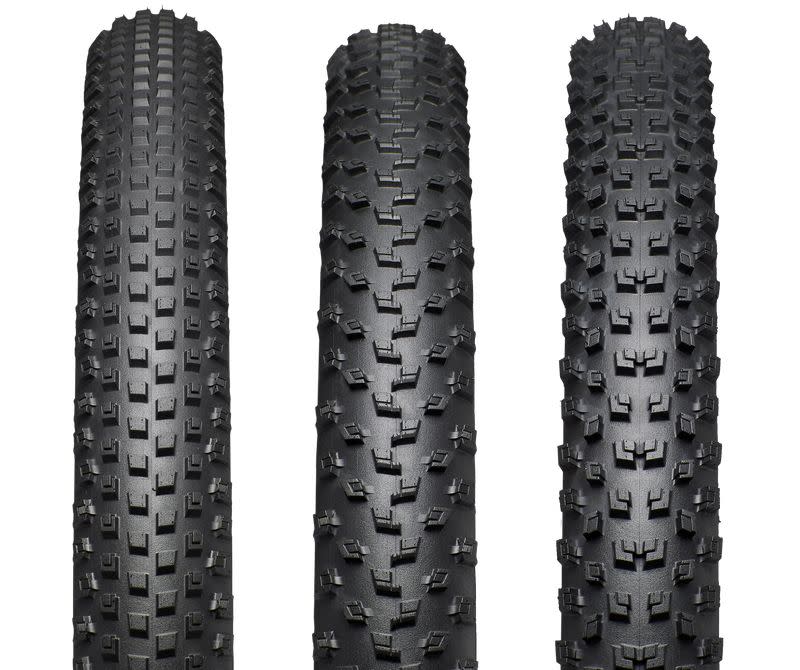
Tread Patterns
Comparing photos of the new tires next to the previous generation of Renegade, Fast Trak, and Ground Control, you will see that Specialized has brought them into the modern era. The big story here is ‘block-in-block’ tread design, something that is used across tire development in general and a variation of what you may have seen on many aggressive-use tires for several years.
In Specialized’s words: “The new block-in-block design increases grip and stability, with raised knobs inspired by motocross tires. The outer structure supports the inner block for a planted ride feel and stable handling.”
Added traction and cornering support, as well as decreased rolling resistance, puts the new tire lineup into consideration for cross-country racers and those wanting fast-rolling, lightweight tires for their trail bike.
Rubber Compounds
In September 2020, Specialized launched a new line of T5, T7, and T9 rubber compounds. These compounds were launched across its gravity- and enduro-oriented tires, including the Eliminator, Purgatory, Slaughter, and Hillbilly models, as well as a Bicycling favorite, the Butcher. This year Specialized completes the tread compound loop by inviting the XC and lightweight trail folks to the party. So, in case you missed the details last year, here is the quick rundown of the compounds.
T5 This compound is fast rolling and longer lasting. You will give up a little grip, but gain a little more durability and speed. Go for these if you ride a lot of hardpack trails, if you split time between pavement and dirt, or if you have long paved rides to the trailhead.
T7 This is the all-around compound and a fine balance between grip, speed, and durability. If you are unsure about what compound to try, or ride a variety of terrain and trail conditions, this is the compound for you.
T9 This is the grip-it and rip-it compound used on gravity, enduro, and technical trail tires. You will not find this compound on the new cross-country tires, though, because it tends to roll slower and wear quickly.
Something new thrown into the mix for the S-Works variants of the Renegade, Fast Trak, and Ground Control is T5/T7 dual compound. This means that Specialized uses the harder T5 compound for the center section, paired with the grippier T7 compound for the side knobs. In theory, this should allow for a tire that rolls fast while also providing cornering bite. This is great for XC racers, and thus why you see it only offered on the lightest-weight S-Works sidewall casing.
Sizing Options
Sizes remain pretty consistent from the previous generation of these tire models. You will find that the old 2.1-inch widths bump up to 2.2 inches and 2.3 inches up to 2.35. There also remain some options for those running plus-size 27.5-inch wheels. Finally, for the groms and old-schoolers out there, there are 26-inch options too!
Casing
Carrying over from the previous generation cross-country range are the sidewall casings. You have the option of S-Works (120 tpi, lightweight) or Control (60 tpi, midweight) on Renegade, Fast Trak, and Ground Control models. For those needing some extra flat protection, the Fast Trak and Ground Control options are available in the Grid (60 tpi, midweight with sidewall protection) casing.
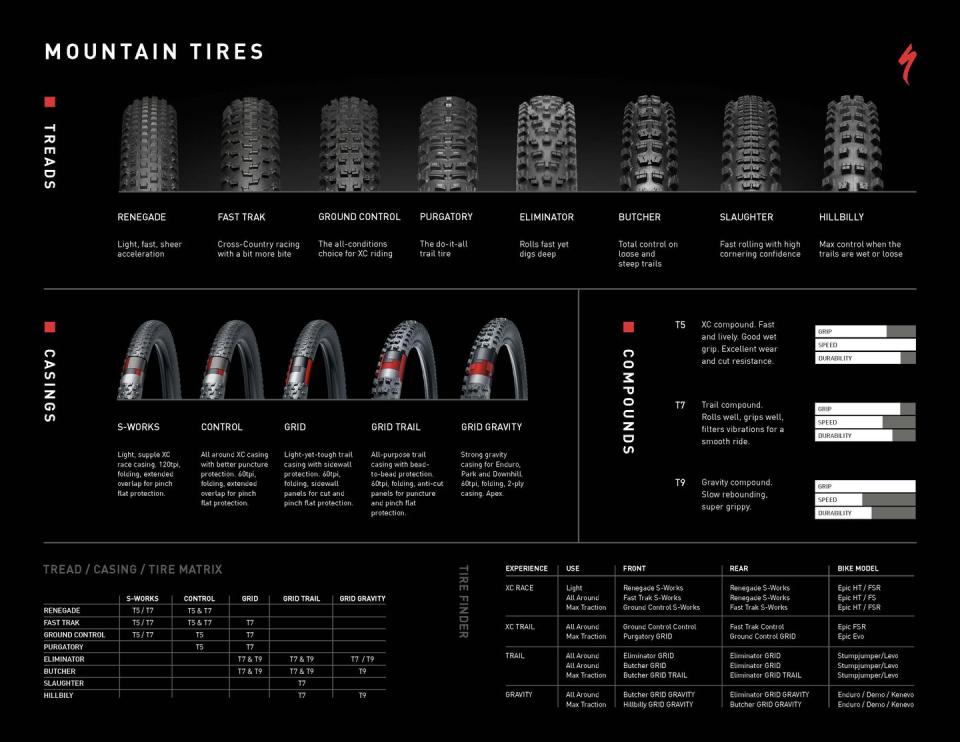
How Do the New Specialized Tires Ride?
We received the Fast Trak and Ground Control tires in 29 x 2.35-inch sizes at our office and promptly got them onto some bikes for ride testing. Out of the box we noticed that they are "comfortably light", with enough protection to push hard but not too burly. On the scale, our sample Fast Trak Grid T7, 29" x 2.35" came in at 766g, a full 34g lighter than Specialized's claimed weight. We split testing duties on these tires between test editors Tara Seplavy (Ground Control T7) and Dan Chabanov (Fast Trak T5 & T7).
Setup of the tires was surprisingly smooth, with both models of tires fitting up without any hassle. Those of us who have been stymied with getting a tubeless tire to seat-up onto a rim late at night before a planned early-morning ride should appreciate this aspect of the Fast Traks and Ground Controls. Of course, your mileage may vary on this as there are a huge number of potential rim-tire combinations.
Fast Track Control T5 (rear), T7 (front); 29 x 2.35-Inch
Tested by: Dan Chabanov
Price: $60
It’s striking how visually different the new Specialized Fast Trak is compared to the previous version. Every single knob on the tire is completely redesigned with new shapes, sizes, and siping. For starters, the new pattern uses much taller knobs. The difference is most drastic in the tire center, with Specialized opting for a much larger ramped knob with no overlap compared to the older version of smaller, tighter-spaced shapes. The overall design is more aggressive and should be more adept at clearing muck from the tires on courses with mixed conditions.

The previous Fast Trak was my go-to XC race tire. It rolled fast and had predictable and progressive grip when I learned it over in turns. The new version did not let me down. Straight-line speed still feels excellent, thanks to aggressive ramping on the center channel. It’s always hard to push a brand new tire to its limits cornering, but my initial impression is that the predictable nature of the Fast Trak remains intact.
My biggest takeaway was just how much more braking traction the new design delivered—particularly descending on very loose, rocky, and rutted-out trails. There were also heaps of straight-line traction as well. Climbing up a newly cut trail, with my gears maxed out, I was patiently expecting my rear tire to lose traction and spin, saving me from having to climb the rest of the way. But the Fast Trak just kept on gripping. It feels like Specialized figured out a way to add more traction to the Fast Trak without slowing it down.
Ground Control Grid T7 (front and rear), 29 x 2.35-Inch
Tested by: Tara Seplavy
Price: $60
As it has been a couple of seasons since I rode Specialized tires, I was eager to spend some time on the new Ground Controls. I have had good experiences with prior editions of the tire and grabbed a pair of the Grid casing T7 variant. Taking them out of the box from California, the first thing that jumped out to me was tighter spacing and stepped profiles of the knobs. Serious thought looked to go into them, but the test would be on the trail.
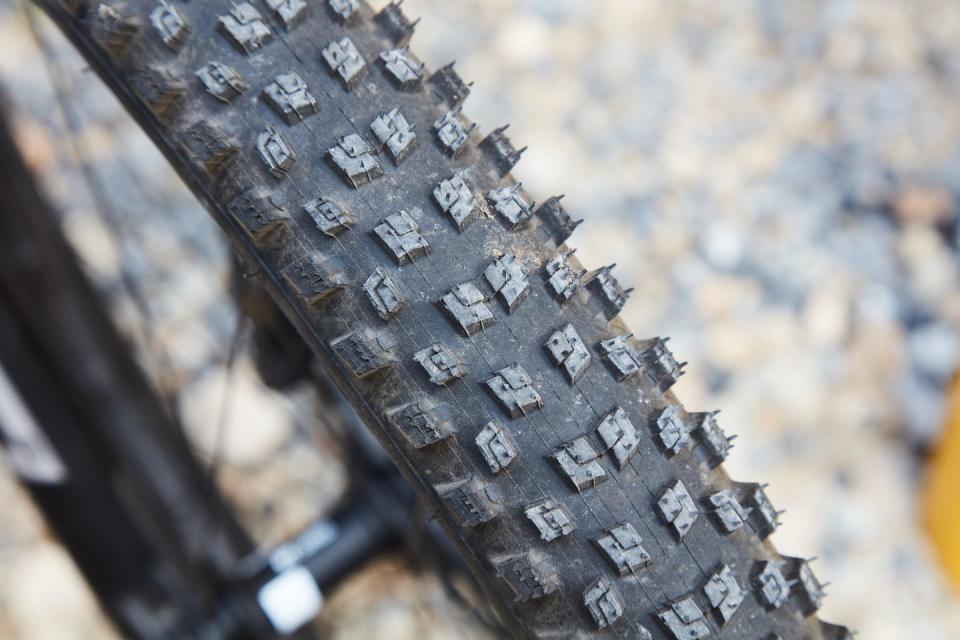
My hometown trails, where I chose to take the Ground Controls for testing, are a mix of fast, flowing hardpack with occasional sand and pine needle cover. Trail conditions at time of testing were dry and loose, so I unfortunately did not get a chance to evaluate the new tread pattern’s mud-shedding ability.
What I did find was that the Ground Controls rolled fast, but had a surprising amount of bite on the side knobs. I typically prefer tires with a squared-off profile, and while not as rounded-off as some XC-oriented tread designs, I was initially cautious with just how hard I would be able to lean and corner the Ground Controls without them breaking loose.
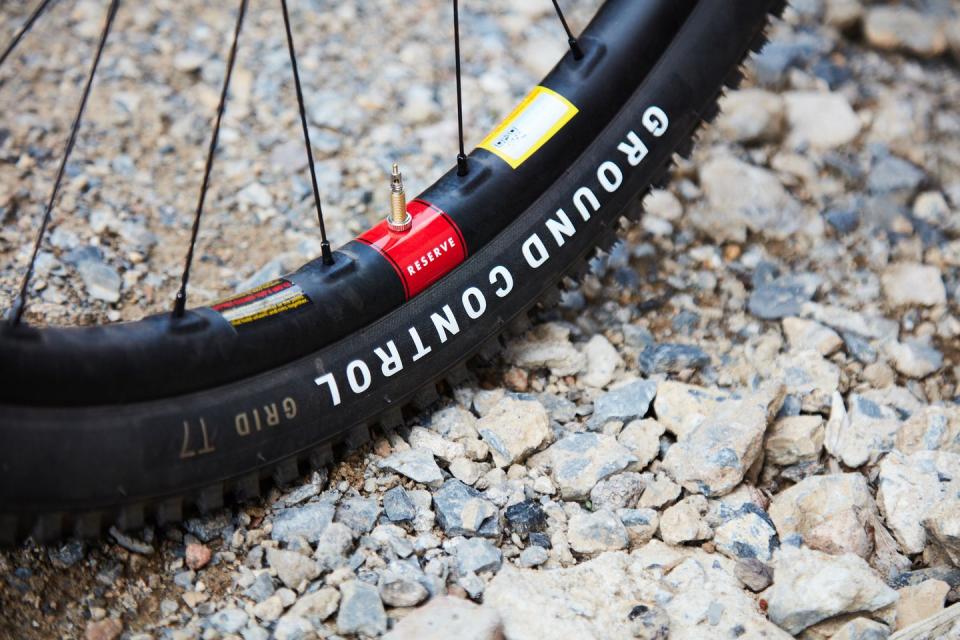
Once I grew confident that the edge would hold when leaned, I began to push these tires harder and more aggressively. While not able to be pushed quite as hard as the 2.3” Maxxis High Roller IIs on my trail bike, the Ground Controls held quite admirably, particularly given how fast they roll.
I was especially impressed with the Ground Control’s ability to bite on bench-cut sections of trail where I was riding the transition between loose and hardpack surface. Often I have found rounded-profile cross-country tires to want to wander and squirm in this situation. The combination of the block-in-block design and grippy T7 compound seemed up to the task.
Though my local trails do not have any prolonged or steep descents, I did find the Ground Control to break loose under some heavier braking. It wasn’t an unpredictable feel, but if I were riding some chunkier trails, or places with steeper lines, I might opt for the Purgatory from Specialized’s product selection.
Key Takeaways
Based on our initial ride testing, we are impressed with the updates to the Fast Trak and Ground Control models. We have not received a revised Renegade model yet for testing, but will keep you posted if they come our way.
Specialized has clearly done its homework, making meaningful updates to the range that will benefit you on the trail. These are tires that will suit a wide range of trail riders and cross-country racers. If you are looking to update your tires for the season, you should be giving these a hard look.
The full lineup of available options, pricing, sizing, and claimed weights is below.
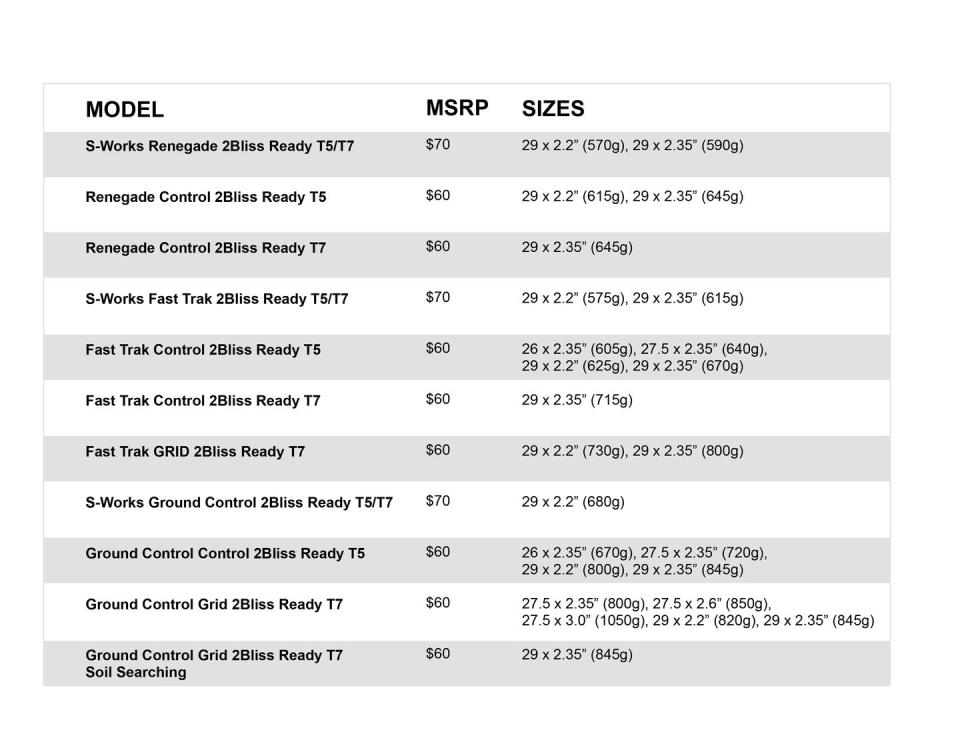
You Might Also Like

